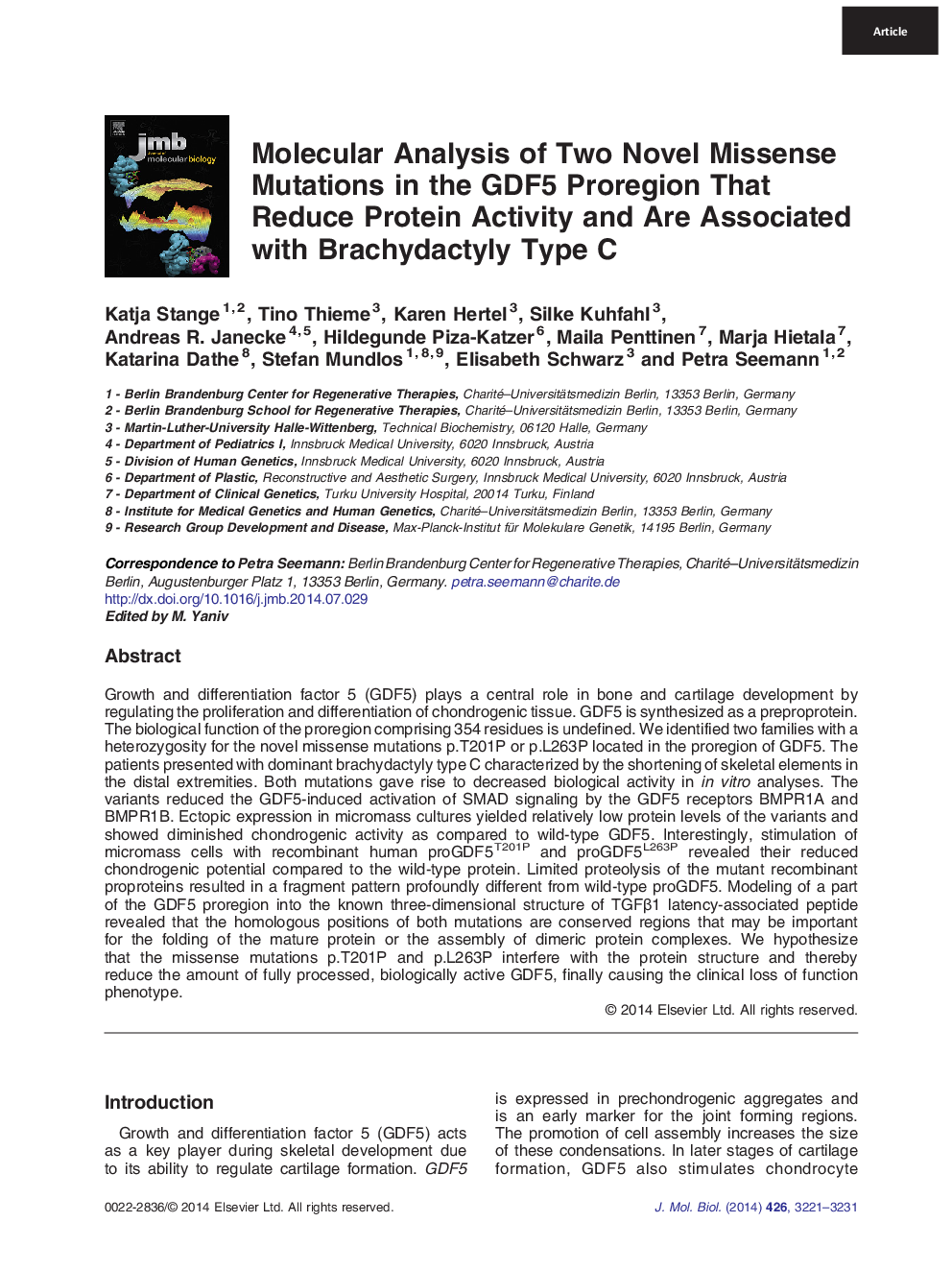| Article ID | Journal | Published Year | Pages | File Type |
|---|---|---|---|---|
| 2184605 | Journal of Molecular Biology | 2014 | 11 Pages |
•Novel point mutations in GDF5 (p.T201P, p.L263P) cause dominant brachydactyly type C.•GDF5T201P and GDF5L263P reduce the biological activity of the growth factor.•GDF5T201P and GDF5L263P lead to decreased protease resistance.
Growth and differentiation factor 5 (GDF5) plays a central role in bone and cartilage development by regulating the proliferation and differentiation of chondrogenic tissue. GDF5 is synthesized as a preproprotein. The biological function of the proregion comprising 354 residues is undefined. We identified two families with a heterozygosity for the novel missense mutations p.T201P or p.L263P located in the proregion of GDF5. The patients presented with dominant brachydactyly type C characterized by the shortening of skeletal elements in the distal extremities. Both mutations gave rise to decreased biological activity in in vitro analyses. The variants reduced the GDF5-induced activation of SMAD signaling by the GDF5 receptors BMPR1A and BMPR1B. Ectopic expression in micromass cultures yielded relatively low protein levels of the variants and showed diminished chondrogenic activity as compared to wild-type GDF5. Interestingly, stimulation of micromass cells with recombinant human proGDF5T201P and proGDF5L263P revealed their reduced chondrogenic potential compared to the wild-type protein. Limited proteolysis of the mutant recombinant proproteins resulted in a fragment pattern profoundly different from wild-type proGDF5. Modeling of a part of the GDF5 proregion into the known three-dimensional structure of TGFβ1 latency-associated peptide revealed that the homologous positions of both mutations are conserved regions that may be important for the folding of the mature protein or the assembly of dimeric protein complexes. We hypothesize that the missense mutations p.T201P and p.L263P interfere with the protein structure and thereby reduce the amount of fully processed, biologically active GDF5, finally causing the clinical loss of function phenotype.
Graphical AbstractFigure optionsDownload full-size imageDownload high-quality image (115 K)Download as PowerPoint slide
